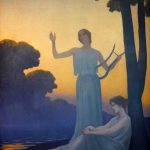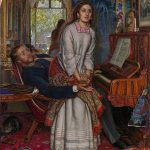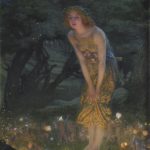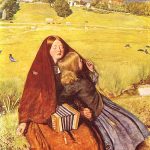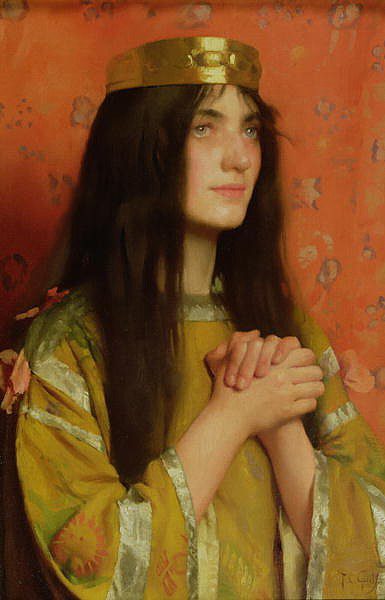
Thomas Cooper Gotch (1854-1931) was a British painter and illustrator associated with the late Victorian and early Edwardian art movements. He is primarily known for his involvement in the Symbolist and Pre-Raphaelite circles and for his evocative and highly detailed portraits, genre scenes, and allegorical works. Here are some key points about Thomas Cooper Gotch:
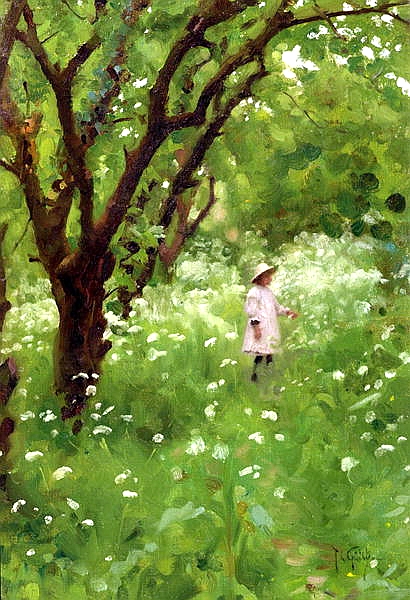
- Early Life and Education: Thomas Cooper Gotch was born on December 10, 1854, in Kettering, Northamptonshire, England. He showed an early aptitude for art and began his formal art education at the Slade School of Fine Art in London.
- Association with the Newlyn School: Gotch was closely associated with the Newlyn School, an art colony in Cornwall, England, known for its plein-air painting and focus on naturalistic subjects. He, along with his wife, Caroline Burland Yates, whom he married in 1881, settled in Newlyn, where they became integral members of the artistic community.
- Symbolism and Pre-Raphaelitism: Gotch’s art was heavily influenced by Symbolism and the Pre-Raphaelite Brotherhood. His works often featured romantic and allegorical themes, characterized by meticulous attention to detail and a focus on poetic and dreamlike subjects.
- Notable Works: One of Gotch’s most famous paintings is “The Child Enthroned” (1894), which showcases his fascination with dreamy, otherworldly depictions of children. Another notable work is “The Orchard” (1887), which captures a pastoral scene in an idyllic garden setting.
- Illustration and Writing: In addition to painting, Gotch was involved in book illustration and writing. He contributed illustrations to books, including children’s literature. His artistic talents extended to designing book covers, making him a versatile artist.
- Later Career: Gotch continued to produce art throughout his career, and his works gained recognition in international exhibitions. He also exhibited at the Royal Academy in London.
- Legacy: Thomas Cooper Gotch’s contributions to the Symbolist and Pre-Raphaelite movements are still celebrated today. His evocative and ethereal paintings continue to captivate art enthusiasts and collectors interested in the late Victorian and Edwardian eras.
- Death and Commemoration: Thomas Cooper Gotch passed away in 1931 in London. His legacy endures through his artistic output, and his works can be found in various public and private collections.
Thomas Cooper Gotch’s ability to convey emotion and symbolism through his meticulously detailed and dreamy paintings made him a notable figure in the late 19th and early 20th-century British art scene. His art remains valued for its contribution to the Symbolist and Pre-Raphaelite movements and its enduring appeal to those who appreciate the beauty of poetic and allegorical imagery.


